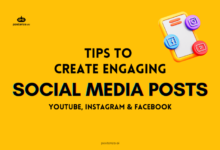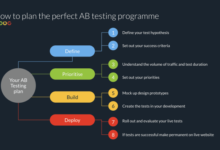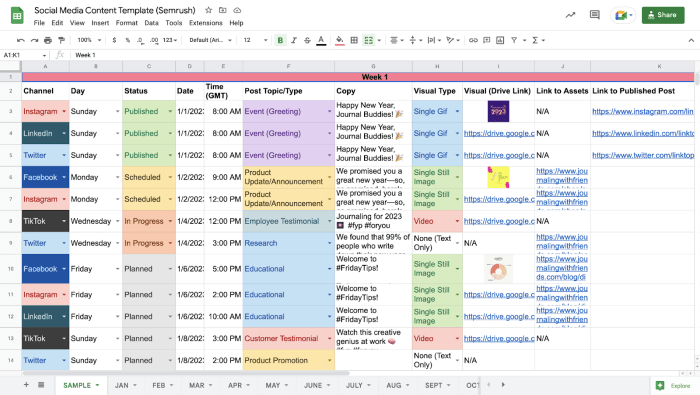
Creating an effective social media calendar is essential for businesses looking to optimize their marketing efforts. By strategically planning and organizing content, companies can enhance their online presence and reach a wider audience. In this guide, we will explore the key components of a successful social media calendar and how it can revolutionize your marketing strategy.
Importance of a Social Media Calendar
Having a social media calendar is crucial for effective marketing as it helps businesses plan and organize their content strategy in advance. By setting a schedule and sticking to it, companies can ensure consistent and relevant posts across various platforms, ultimately increasing engagement and driving traffic to their website.
Streamlining Content Planning
A well-structured social media calendar can streamline content planning by providing a clear overview of upcoming posts, including their topics, formats, and publishing dates. This allows marketing teams to align their messaging with specific campaigns, events, or promotions, ensuring a cohesive and strategic approach to content creation.
- Ensures a consistent posting schedule, which helps maintain audience interest and loyalty.
- Helps identify content gaps and opportunities for diversifying the type of posts shared.
- Allows for better coordination between different team members responsible for creating and publishing content.
Benefits of Staying Organized
Staying organized with a social media calendar offers several benefits, such as improving efficiency, maximizing resources, and fostering creativity in content development. By having a clear plan in place, businesses can better track their performance, adjust their strategies as needed, and optimize their social media presence for optimal results.
“A social media calendar is like a roadmap that guides your brand’s journey through the digital landscape, ensuring you stay on course and reach your destination successfully.”
Components of a Social Media Calendar: Creating An Effective Social Media Calendar
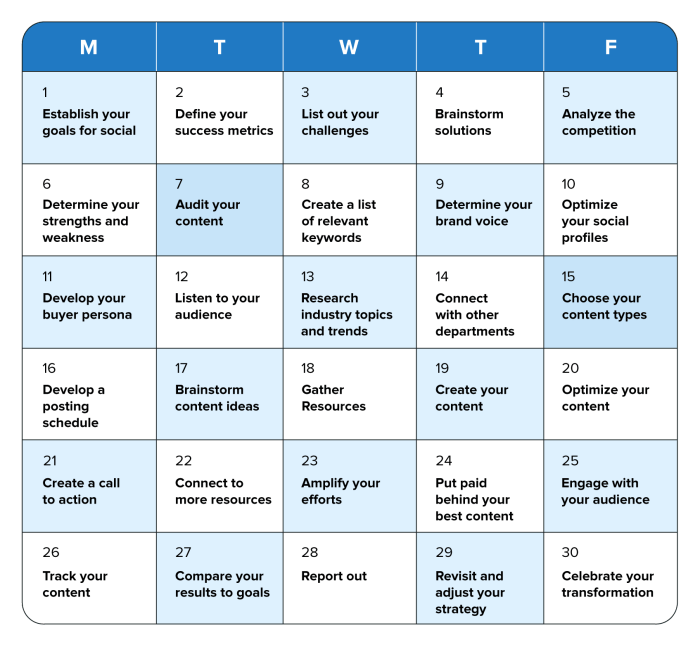
A social media calendar is a crucial tool for organizing and planning your content strategy effectively. To create a comprehensive social media calendar, you need to include several key components:
1. Content Types
When structuring your social media calendar, it’s essential to categorize content based on different types such as blogs, videos, infographics, polls, and more. This helps in maintaining a diverse and engaging content mix for your audience.
Using a server proxy can offer numerous benefits for businesses. From improved security to better performance, the Benefits of using a server proxy are undeniable. Businesses can enhance their online presence and protect sensitive data by implementing a server proxy.
2. Posting Schedule
Include a detailed posting schedule in your social media calendar, specifying the date and time for each post. Consistency in posting is key to maximizing engagement and reach.
When it comes to testing the performance of servers, it is crucial to use the right tools. One of the top server performance testing tools available in the market is Top server performance testing tools. These tools help in identifying bottlenecks and optimizing server performance for better user experience.
3. Campaign Themes
Integrate campaign themes into your social media calendar to align your content with your marketing objectives. This helps in creating a cohesive brand message across all platforms.
4. Hashtags and s
Don’t forget to include relevant hashtags and s in your social media calendar. This will improve the discoverability of your content and boost organic reach.
5. Analytics and Tracking
Integrate analytics and tracking tools into your social media calendar to monitor the performance of your posts. This data will help you refine your strategy and optimize future content.
Implementing a successful affiliate marketing program requires careful planning and execution. Businesses can benefit greatly from the insights provided in Implementing a successful affiliate marketing program. This guide offers strategies to attract affiliates, track performance, and maximize ROI for a successful program.
6. Collaboration and Approval Process
Include a workflow for collaboration and approval within your social media calendar. This ensures that all stakeholders are aligned and that content is reviewed before publishing.
7. Seasonality and Trends
When planning your content calendar, consider incorporating seasonality and current trends. This can help your content stay relevant and timely, increasing engagement with your audience.
Creating Content Strategy

Creating a content strategy that aligns with your social media calendar is crucial for maintaining consistency and achieving your marketing goals. By carefully planning and organizing your content, you can ensure that your messaging is cohesive and engaging across all platforms.
Balancing Promotional and Engaging Content
When creating your content strategy, it’s important to strike a balance between promotional and engaging content. While promotional posts are essential for driving sales and conversions, too many can come off as spammy and turn off your audience. On the other hand, engaging content such as behind-the-scenes looks, user-generated content, and interactive polls can help build a loyal following and increase brand awareness.
- Use the 80/20 rule: Aim to make only 20% of your content promotional, while the remaining 80% should focus on providing value and engaging your audience.
- Alternate between promotional and engaging posts to keep your feed dynamic and interesting for your followers.
- Experiment with different types of content, such as videos, infographics, and user testimonials, to see what resonates best with your audience.
- Monitor the performance of your posts and adjust your content strategy accordingly to optimize engagement and conversion rates.
Repurposing Content Effectively
Repurposing content is a great way to maximize the impact of your social media calendar and reach a wider audience without creating entirely new material from scratch. By repurposing your existing content in different formats or for different platforms, you can extend the lifespan of your content and reinforce key messages.
- Turn blog posts into social media graphics or short videos to share on platforms like Instagram and Facebook.
- Take key insights from webinars or podcasts and repurpose them into bite-sized tips or quotes for Twitter or LinkedIn.
- Create a series of posts around a central theme or topic to provide a comprehensive look at a subject while repurposing content in a cohesive manner.
- Update and republish evergreen content to keep it relevant and drive ongoing traffic to your website or social media profiles.
Scheduling and Timing
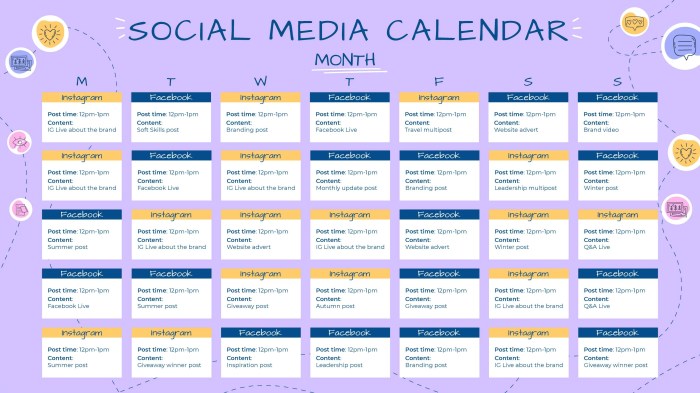
Effective social media marketing involves not only creating engaging content but also ensuring that it reaches the right audience at the right time. Scheduling posts at optimal times is crucial for maximizing engagement and reaching a larger audience. By understanding the best times to post on different platforms, you can increase visibility, drive traffic, and ultimately achieve your social media marketing goals.
Importance of Scheduling Posts at Optimal Times
Determining the best posting schedule for different platforms requires careful consideration of factors such as your target audience’s demographics, behavior patterns, and time zones. Here are some tips to help you optimize your posting schedule:
- Know your audience: Understanding your target audience’s behavior patterns and preferences is essential for determining the best times to post. Analyze when your audience is most active on each platform and schedule your posts accordingly.
- Experiment with timing: Test different posting times to see when your audience is most responsive. Use social media analytics tools to track engagement metrics and identify patterns that can help you refine your posting schedule.
- Consider platform-specific best practices: Each social media platform has its own peak times for engagement. Research industry benchmarks and best practices to determine the optimal posting times for platforms like Facebook, Instagram, Twitter, LinkedIn, and Pinterest.
- Stay consistent: Consistency is key to building a loyal following and maintaining engagement. Create a regular posting schedule based on your audience’s preferences and behavior to keep your content visible and relevant.
Using Analytics to Refine Post Timing
Analytics play a crucial role in refining the timing of posts within your social media calendar. By tracking key metrics such as engagement rates, reach, and click-through rates, you can gain valuable insights into how your audience responds to different posting times. Here’s how you can use analytics to optimize your posting schedule:
- Monitor engagement metrics: Keep track of your posts’ performance metrics to identify trends and patterns in audience engagement. Look for peak engagement times and adjust your posting schedule accordingly.
- Use A/B testing: Experiment with different posting times and measure the impact on engagement metrics. Compare the results to determine the most effective timing for reaching your audience.
- Utilize scheduling tools: Take advantage of social media scheduling tools that offer analytics features to help you track and analyze the performance of your posts. Use these insights to make data-driven decisions about your posting schedule.
- Iterate and optimize: Continuously monitor and analyze your social media performance data to refine your posting schedule over time. Stay agile and adapt to changes in audience behavior and platform algorithms to maximize your reach and engagement.
Collaboration and Alignment
Effective collaboration and alignment within a team are crucial for the success of a social media calendar. By involving team members in the planning process, aligning the calendar with overall marketing goals, and fostering communication, companies can ensure a cohesive and strategic approach to their social media efforts.
Involving Team Members
- Hold regular meetings or brainstorming sessions to gather input from team members across different departments, such as marketing, sales, and customer service.
- Assign specific roles and responsibilities to team members based on their expertise and strengths to ensure efficient execution of the social media calendar.
- Encourage team members to share ideas, feedback, and suggestions for content creation, scheduling, and engagement strategies.
Aligning with Marketing Goals
- Review the company’s overall marketing goals and objectives to tailor the social media calendar to support these initiatives.
- Ensure that the content planned aligns with the brand’s messaging, values, and target audience to maintain consistency across all marketing channels.
- Track key performance indicators (KPIs) such as engagement rates, click-through rates, and conversions to measure the effectiveness of the social media calendar in achieving marketing goals.
Fostering Collaboration and Communication
- Utilize project management tools or software to centralize communication, share calendars, assign tasks, and track progress in real-time.
- Establish clear communication channels, such as Slack channels or email threads, for team members to discuss ideas, provide updates, and address any challenges or concerns.
- Encourage a culture of open feedback and constructive criticism to continuously improve the social media calendar and enhance team collaboration.
Monitoring and Evaluation
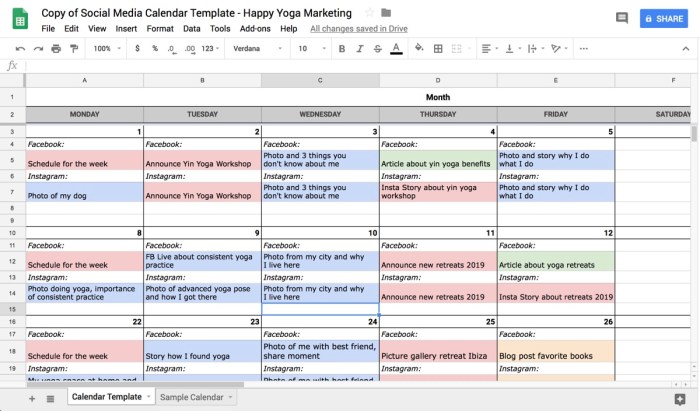
Tracking performance metrics within the social media calendar is crucial for assessing the effectiveness of your social media strategy. By monitoring key metrics, you can gain insights into what is working well and what needs improvement.
Methods for Monitoring Engagement and Adjusting the Calendar
- Utilize social media analytics tools: Platforms like Facebook Insights, Twitter Analytics, and Instagram Insights provide valuable data on engagement metrics such as likes, comments, shares, and click-through rates.
- Track website traffic: Use tools like Google Analytics to monitor how social media efforts are driving traffic to your website, helping you understand the impact of your content.
- Monitor audience sentiment: Pay attention to comments, direct messages, and mentions to gauge how your audience is responding to your content and adjust your strategy accordingly.
- A/B testing: Experiment with different types of content, posting times, and messaging to see what resonates best with your audience, and make data-driven decisions based on the results.
Role of Feedback and Evaluation in Refining the Social Media Calendar, Creating an effective social media calendar
Feedback from your audience and evaluation of your social media performance are essential for refining your social media calendar and optimizing your strategy.
Listening to your audience’s feedback can provide valuable insights into their preferences, interests, and pain points, helping you tailor your content to better meet their needs.
Regularly evaluating the performance of your social media content allows you to identify trends, patterns, and areas for improvement, ensuring that you are continuously evolving and adapting to meet your goals.
Summary

In conclusion, implementing a well-structured social media calendar can significantly improve your marketing outcomes by ensuring consistency, relevance, and engagement. By following the strategies Artikeld in this guide, you can take your social media presence to new heights and achieve your business objectives with precision.
